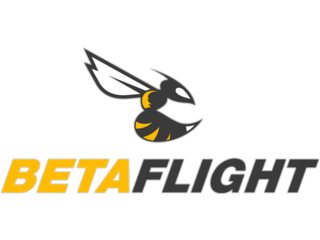A Comprehensive Guide to Open-Source Flight Control Software for Drones
Discover the best open-source flight control software for drones in this comprehensive guide. Explore ArduPilot, PX4, INAV, and Betaflight, and learn about their features, advantages, and disadvantages to find the perfect software for your drone flying needs.
DIY
The rapid growth of drone technology has led to an increased demand for versatile and reliable flight control software. Open-source options provide drone enthusiasts and professionals with customizable solutions tailored to their specific needs. In this post, we’ll explore four of the most popular open-source flight control software platforms: ArduPilot, PX4, INAV, and Betaflight. We’ll discuss their key features, strengths, weaknesses, and provide a comparison to help you choose the best software for your drone projects.
1. ArduPilot: The Versatile All-Rounder
Overview: ArduPilot is a highly versatile open-source flight control software that supports a wide range of unmanned vehicles, including multi-copters, planes, helicopters, and even ground and underwater vehicles. Its extensive community support and proven reliability have made it a top choice among both hobbyists and professionals.
Key Features:
Wide Vehicle Support: ArduPilot is compatible with various vehicle types, offering flexibility for different applications.
User-Friendly Tools: With tools like Mission Planner, users can easily configure and manage their drones, making it accessible even for beginners.
Comprehensive Flight Modes: ArduPilot includes multiple flight modes such as Stabilize, Loiter, and Return to Launch, catering to diverse mission requirements.
Advantages:
Strong Community and Documentation: A large community provides abundant resources for troubleshooting and learning.
Broad Hardware Compatibility: Works with a wide range of hardware components, providing great flexibility in drone builds.
Proven Track Record: Extensively tested across a million vehicles globally, ensuring reliability.
Disadvantages:
GPL License: The GPL license requires that any modifications be shared with the community, which might be a drawback for commercial entities.
Less Focus on Autonomy: While versatile, ArduPilot may not offer the same level of advanced autonomy as some other platforms.
2. PX4: Precision and Modularity for Professionals
Overview: PX4 is known for its precision and modular architecture, making it a popular choice for commercial and research applications. Supported by the Dronecode Foundation, PX4 is designed for complex operations and is widely used in professional environments.
3. INAV: Optimized for Navigation and Long-Range Missions
Overview: INAV is specifically designed for navigation and autonomous flight, making it a great choice for drone pilots interested in exploring new locations or performing long-range missions. It’s particularly favored by those flying fixed-wing aircraft and long-range multi-rotors.
4. Betaflight: The Choice for Racing and Freestyle
Overview: Betaflight is the go-to open-source software for drone racing and freestyle flying. It offers advanced tuning and high-performance features, making it the preferred choice for pilots who need to optimize their drones for speed and agility.
Choosing the Right Flight Control Software
Selecting the best flight control software for your drone depends largely on your specific use case, skill level, and the type of vehicle you are operating. Each of the open-source flight control software platforms discussed—ArduPilot, PX4, INAV, and Betaflight—has distinct features and strengths that cater to different aspects of drone flying.
ArduPilot is ideal for those seeking versatility and broad support across various unmanned vehicles. If you are someone who enjoys experimenting with different types of drones, from multi-copters to submarines, ArduPilot's extensive vehicle compatibility makes it a top choice. Its strong community and comprehensive documentation provide ample resources for learning and troubleshooting, which is particularly beneficial for beginners and hobbyists. Moreover, its robust feature set, including multiple flight modes and reliable hardware support, ensures that you can adapt your drone operations to a wide range of applications, from recreational flying to professional missions.
On the other hand, PX4 is more suited for advanced users and professionals who require high precision and modularity in their drone operations. With its emphasis on modular architecture and advanced autonomous capabilities, PX4 excels in scenarios that demand intricate control and customization. It is widely adopted in the commercial drone industry and research institutions, making it the preferred choice for projects that involve complex, autonomous operations, such as surveying, mapping, and search and rescue missions. PX4’s BSD license also provides more flexibility for businesses looking to maintain proprietary control over their modifications.
INAV is the go-to option for pilots focused on navigation and autonomous flight missions, especially for long-range and fixed-wing flights. It offers excellent support for navigation features like waypoint navigation and Return to Home, making it ideal for users who want to explore new locations or conduct precise, controlled flights over longer distances. INAV’s user-friendly configuration and ease of use make it accessible to hobbyists and less-experienced pilots who are looking for stability and reliability in their flying.
Lastly, Betaflight is the optimal choice for drone racing enthusiasts and freestyle pilots who prioritize high performance and extensive tuning capabilities. If you are interested in pushing your drone to its limits with fast-paced maneuvers and acrobatic flying, Betaflight’s advanced performance optimization tools and active development community ensure that you have the latest features and support to fine-tune your drone’s behavior. Its focus on high-speed and agile flying makes it less suited for autonomous operations but perfect for those who thrive on manual control and performance customization.
In conclusion, the decision of which flight control software to choose should be guided by your specific flying goals, the type of drone you are operating, and your comfort level with technical configuration. Whether you are a beginner looking to learn the basics, a professional seeking advanced functionality, or an enthusiast eager to explore new terrains, there is an open-source flight control software that fits your needs. By understanding the unique strengths of each platform, you can make an informed decision that enhances your drone flying experience and helps you achieve your goals.




Key Features:
Modular Design: Allows for the integration of custom modules and hardware, making it highly adaptable for research and commercial projects.
Advanced Autonomous Capabilities: Features like obstacle avoidance and GPS-denied navigation make PX4 ideal for professional use.
Adopted by Industry Leaders: PX4 is widely used in the commercial drone industry, known for its reliability and precision.
Advantages:
BSD License: Offers more freedom for commercial use, allowing proprietary changes without sharing them back with the community.
Precision Control: PX4 excels in tasks requiring detailed and precise control, particularly in complex autonomous operations.
Disadvantages:
Steeper Learning Curve: The complexity of PX4 may present challenges for beginners.
Smaller Community: While robust, PX4's community is not as large as ArduPilot's, which might affect the availability of support.


Key Features:
Navigation Focus: INAV excels in navigation-related tasks, offering features like waypoint navigation and Return to Home.
User-Friendly Configuration: The software’s interface is designed to be intuitive, making it easier for new users to set up and operate.
Versatility Across Platforms: While particularly strong for fixed-wing aircraft, INAV also supports multi-rotors and other vehicle types.
Advantages:
Easy to Use: Generally simpler to set up than some other flight control software, which is appealing to hobbyists.
Ideal for Long-Range Flights: INAV is optimized for stability and precision in long-range missions, particularly with fixed-wing drones.
Disadvantages:
Limited Customization: INAV might not offer the same level of customization as ArduPilot for complex or highly specific missions.
Focus on Stability: While excellent for stable flight, it may lack advanced performance tuning found in other platforms like Betaflight.


Key Features:
Performance-Oriented: Betaflight offers extensive tuning options to maximize performance, particularly for racing and freestyle drones.
Active Development: Regular updates and strong community support keep Betaflight at the forefront of drone racing technology.
Advantages:
High Customization: Allows for detailed tuning of flight performance, which is crucial for racing and acrobatic flying.
Advanced Flight Data: Features like black box logging provide detailed insights for optimizing drone performance.
Disadvantages:
Not Suited for Autonomous Missions: Betaflight is designed for manual control and high-speed maneuvers, lacking the autonomous features found in other software.
Specialized Focus: Primarily geared towards racing and freestyle, it might not be suitable for other drone applications.
